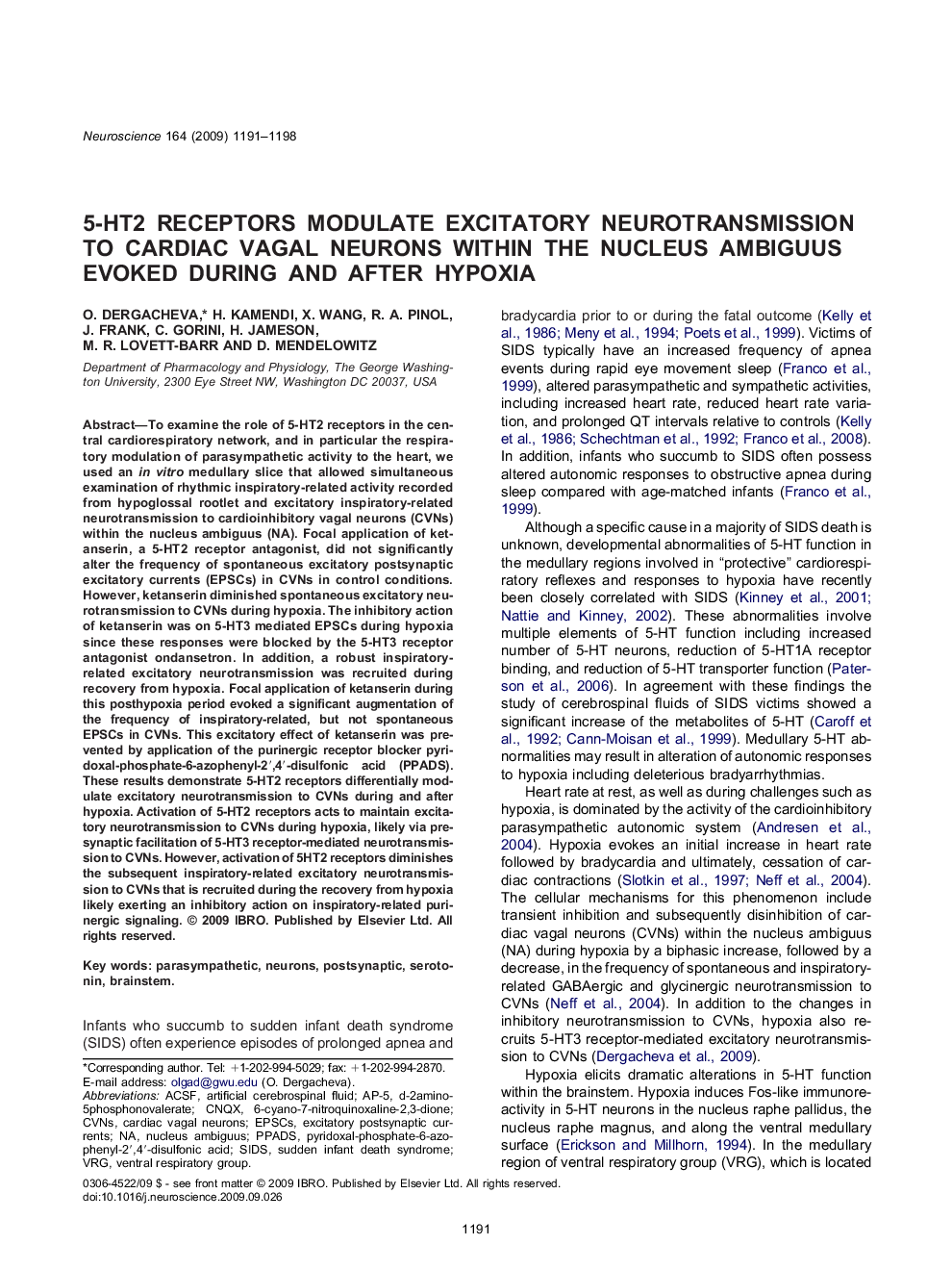| کد مقاله | کد نشریه | سال انتشار | مقاله انگلیسی | نسخه تمام متن |
|---|---|---|---|---|
| 6277501 | 1295759 | 2009 | 8 صفحه PDF | دانلود رایگان |
عنوان انگلیسی مقاله ISI
5-HT2 receptors modulate excitatory neurotransmission to cardiac vagal neurons within the nucleus ambiguus evoked during and after hypoxia
دانلود مقاله + سفارش ترجمه
دانلود مقاله ISI انگلیسی
رایگان برای ایرانیان
کلمات کلیدی
AP-5pyridoxal-phosphate-6-azophenyl-2′,4′-disulfonic acidpostsynapticPPADSParasympatheticSIDSCVNsVRGEPSCsaCSF6-Cyano-7-nitroquinoxaline-2,3-dione - 6-Cyano-7-nitroquinoxaline-2،3-dioneexcitatory postsynaptic currents - جریان های پسینپتیک هیجان انگیزBrainstem - ساقه مغزSerotonin - سروتونینSudden Infant Death Syndrome - سندرم مرگ ناگهانی نوزادCNQX - سیانکیوایکسartificial cerebrospinal fluid - مایع مغزی نخاعی مصنوعیNeurons - نورون ها،یاخته های عصبیnucleus ambiguus - هسته ابهامVentral respiratory group - گروه تنفسی انسدادی
موضوعات مرتبط
علوم زیستی و بیوفناوری
علم عصب شناسی
علوم اعصاب (عمومی)
پیش نمایش صفحه اول مقاله

چکیده انگلیسی
To examine the role of 5-HT2 receptors in the central cardiorespiratory network, and in particular the respiratory modulation of parasympathetic activity to the heart, we used an in vitro medullary slice that allowed simultaneous examination of rhythmic inspiratory-related activity recorded from hypoglossal rootlet and excitatory inspiratory-related neurotransmission to cardioinhibitory vagal neurons (CVNs) within the nucleus ambiguus (NA). Focal application of ketanserin, a 5-HT2 receptor antagonist, did not significantly alter the frequency of spontaneous excitatory postsynaptic excitatory currents (EPSCs) in CVNs in control conditions. However, ketanserin diminished spontaneous excitatory neurotransmission to CVNs during hypoxia. The inhibitory action of ketanserin was on 5-HT3 mediated EPSCs during hypoxia since these responses were blocked by the 5-HT3 receptor antagonist ondansetron. In addition, a robust inspiratory-related excitatory neurotransmission was recruited during recovery from hypoxia. Focal application of ketanserin during this posthypoxia period evoked a significant augmentation of the frequency of inspiratory-related, but not spontaneous EPSCs in CVNs. This excitatory effect of ketanserin was prevented by application of the purinergic receptor blocker pyridoxal-phosphate-6-azophenyl-2â²,4â²-disulfonic acid (PPADS). These results demonstrate 5-HT2 receptors differentially modulate excitatory neurotransmission to CVNs during and after hypoxia. Activation of 5-HT2 receptors acts to maintain excitatory neurotransmission to CVNs during hypoxia, likely via presynaptic facilitation of 5-HT3 receptor-mediated neurotransmission to CVNs. However, activation of 5HT2 receptors diminishes the subsequent inspiratory-related excitatory neurotransmission to CVNs that is recruited during the recovery from hypoxia likely exerting an inhibitory action on inspiratory-related purinergic signaling.
ناشر
Database: Elsevier - ScienceDirect (ساینس دایرکت)
Journal: Neuroscience - Volume 164, Issue 3, 15 December 2009, Pages 1191-1198
Journal: Neuroscience - Volume 164, Issue 3, 15 December 2009, Pages 1191-1198
نویسندگان
O. Dergacheva, H. Kamendi, X. Wang, R.A. Pinol, J. Frank, C. Gorini, H. Jameson, M.R. Lovett-Barr, D. Mendelowitz,